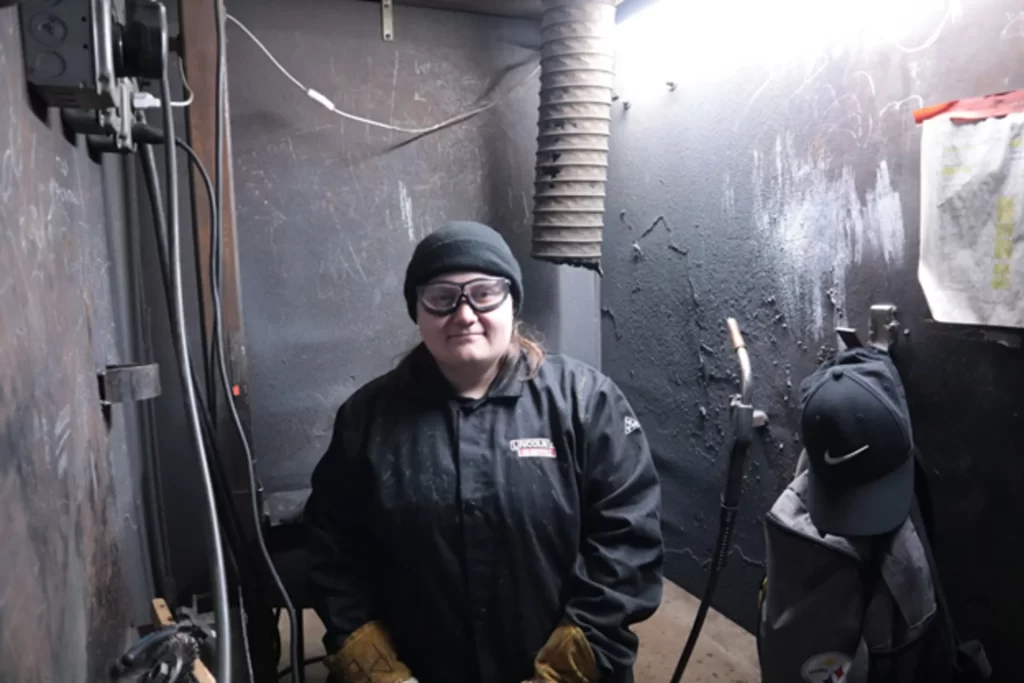Construction and manufacturing are only two of the numerous sectors that employ welding. A competent individual known as a welder attaches metal pieces by melting them at a high temperature and then allowing them to cool and harden. You must fulfill specified educational requirements, which often involve finishing a welding program at a vocational school or community college, to become a skilled welder. We shall follow a skilled welder who has completed these educational prerequisites throughout the course of this article.
As a skilled welder, every day is different, but some routines remain constant. For example, a typical day for a welder starts early in the morning with a good breakfast to fuel their body for the hard work ahead. In this case, we will look at the day in the welder’s life who met the education requirements to become a professional welder.
Welding is a technical trade that requires some level of education and certification. To become a welder, one must have a high school diploma or equivalent and complete a welding program or apprenticeship. A welding program or apprenticeship can take from six months to two years to complete, depending on the level of certification desired. Some welders also pursue additional welding technology or engineering education to advance their careers.
Around five in the morning, the welder gets up to prepare for work. He commutes only a short distance and resides in a compact flat close to his job. He then packs his lunch and leaves after taking a brief shower and eating breakfast.
The welder is employed in a manufacturing facility, thus he is required to wear personal protective equipment (PPE) at all times. He dons his welding helmet, gloves, and jacket before getting to work. Welders are educated to take all essential steps to prevent accidents since safety is their first concern.
He loves to show up early to be ready for the day even though the welder’s work shift doesn’t start until 7 am. He starts by making sure all of his gear, including his welding machine, are in working order. Tools used by welders include drills, grinders, cutters, and welders.
He goes to his desk once he has everything he requires. Construction sites and factories are only two of the places where welder work. The type of labor they do varies depending on the project. The welder also works on a manufacturing line, where he is in charge of joining metal parts for various goods.
Welding metal components together to produce a final product is the welder’s primary duty. He first melts the metal components using his welding equipment to heat them up. He then adds a filler substance, which melts and unites the pieces as it cools. The welder has undergone thorough welding training to obtain the accuracy and competence necessary for welding.
Welders must also be familiar with different types of welding, including MIG (metal inert gas), TIG (tungsten inert gas), and stick welding. The welder is skilled in all three types of welding and knows which one to use depending on the project’s requirements.

In addition to welding, the welder also uses other tools to prepare metal parts before welding. For example, he uses grinders and cutters to smooth rough edges and remove excess material. He also uses drills to create holes for bolts and screws.
An eight-hour shift for the welder includes a 30-minute lunch break. He takes a sandwich, some fruit, and a beverage for lunch from home. He also packs a water bottle since welders need to stay hydrated, especially in hot situations.
The welder uses his lunch break as a chance to relax and rejuvenate. Taking pauses is crucial to preventing burnout since welding job is physically and mentally taxing.

The welder returns to his desk to resume welding after his lunch break. Although welding might be a repetitious activity, it calls for focus and attention. Therefore, the welder maintains vigilance and attention to prevent errors that can jeopardize the product’s quality or safety.
At 4:00 p.m., he finishes his work for the day. He cleans up his welding equipment and tools and ensures everything is in its proper place. He then checks out with his supervisor and heads home.
He takes a shower and changes into relaxed attire when he gets home. He then spends time with his family, has supper, and unwinds before retiring for the night. During this time, he also reviews his plans for the following day to make sure he is ready for any problems.
Along with welding, the competent skilled welder interacts with his coworkers and supervisor to keep the job on schedule. Because welding is frequently a component of a broader industrial process, welders must cooperate with other tradespeople to get the desired outcome.
In conclusion, a welder often executes welding activities according to quality and safety requirements, takes frequent breaks, and works with team members. Therefore, they must be quite knowledgeable about welding procedures.
Read More